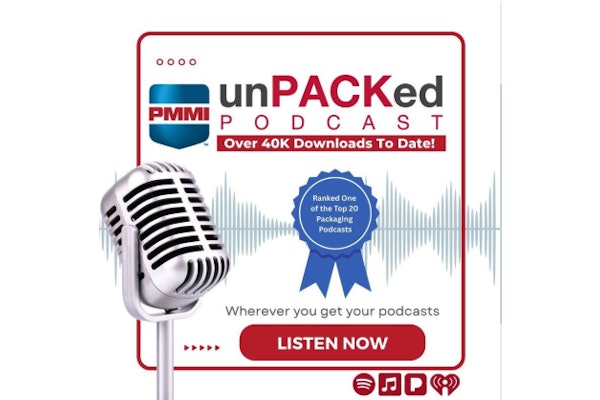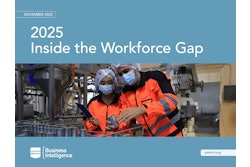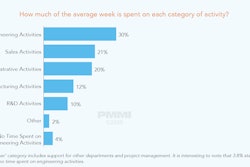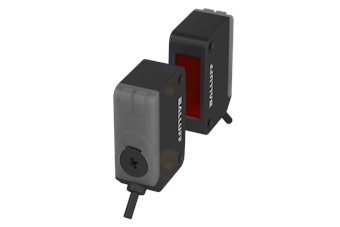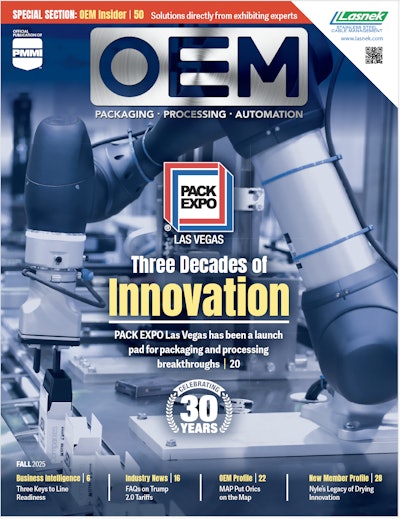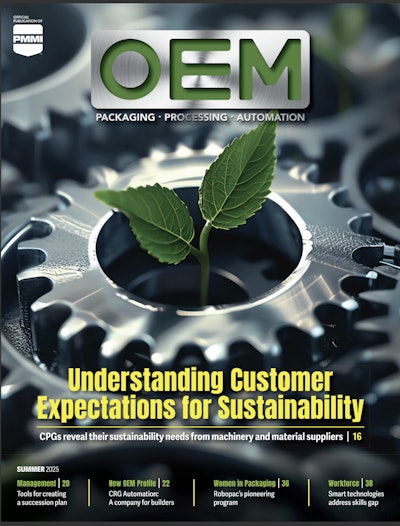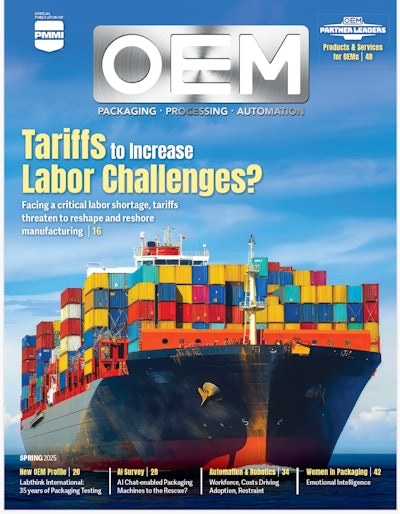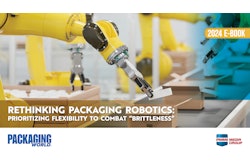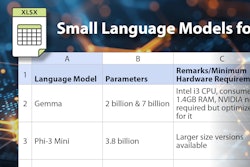After supply chain disruptions and other challenges have caused dramatic price increases, packaging machinery producers are finding strategies to fight inflation, according to PMMI Business Intelligence’s “2023 State of the Industry” report.
Component prices for packaging machinery manufacturers have been extremely volatile over the past three years, compounded by the fact that most machinery in the packaging sector is custom-built, where price volatility is significant.
These factors can make it difficult to provide quotes to customers, which effectively account for the rapidly changing price levels of the materials used in the manufacturing process.
The PMMI Business Intelligence team has observed a few strategies by these machine producers that aimed to mitigate inflation and price volatility challenges.
Reducing quote response windows for customers
In the past, customers may have received quotes for projects with a response window of 30 or 60 days. Many vendors elected to shorten these windows in recent years to reduce the risk to their bottom line.
In 2022, low-voltage motor vendors passed on three separate price increases to their customers, with a total increase greater than 20%.
If a machinery supplier happened to be waiting for a quote acceptance while this increase was initiated, it could significantly impact the profitability of a project.
Negotiating more flexible price agreements
Amid rapidly increasing prices, many machine builders began having more regular meetings with their component and material suppliers to enable greater flexibility in the price they were paying for select components.
In times when prices are relatively stable, machine builders will engage in longer-term contracts to lock a price for a component with the assumption that in 12 months, that price will likely be 2-3% higher, in line with inflation.
As disinflation has begun to occur, the opposite is now taking place. Across the end of 2022 and into 2023, raw material prices have begun dropping dramatically. The expectation is that component costs will follow during the next 12 months.
Therefore, many machine builders are looking to re-negotiate more flexible contracts with their suppliers to ensure they are not paying more than the broader market.
Throughout 2020 and 2021, companies also utilized payment terms to manage a damaged supply chain.
Standard contracts typically structure payments over a period until the machine is ultimately delivered. For example, a contract may ask for a 50/40/10 payment schedule – 50% due at the time of purchase, 40% due at shipping, and 10% due at the date of delivery.
As inflationary pressures drove up prices and lead times, smaller firms were stretched for cash. A machine builder selling to an end-user in this position may offer a 30/30/30/10 payment schedule, monthly payments, or open a line of credit.
Offering flexibility during volatile times is generally seen as a relationship strengthening initiative suppliers can engage in with key customers.
Pressuring component suppliers to lower pricing
Over the next 12 months, the cost of producing components needed for packaging machine production is expected to come down. Despite this, component suppliers are likely not going to race to bring their component prices down.
Many machine builders, particularly those with strong buying power, are already beginning to demand lower prices on this basis.
PMMI Business Intelligence researchers believe this is necessary to maintain acceptable cost levels over the near term, as it is unlikely that component suppliers will announce broad decreases in component pricing as they did with increases in 2021 and 2022. Instead, price levels will come down through negotiation.
SOURCE: PMMI Business Intelligence: 2023 State of the Industry
Download the FREE executive summary below.







